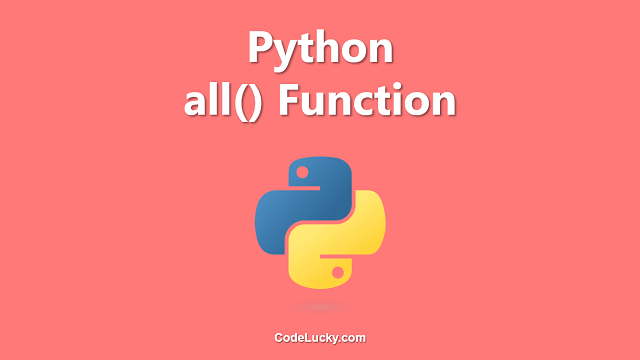The isalpha() method is a built-in method in Python that checks whether all characters in a string are alphabetic (a-z, A-Z) and returns a boolean value (True or False).
Syntax
The syntax of the isalpha() method is as follows:
string.isalpha()
Here, string is the string to be checked for alphabetic characters.
Return Value
The isalpha() method returns a boolean value (True or False). It returns True if all characters in the string are alphabetic and False if the string contains at least one non-alphabetic character.
Examples
Here are three different examples of how to use the isalpha() method in Python:
Example 1: Checking If a String Contains Only Alphabetic Characters
The following example demonstrates how to use the isalpha() method to check if a string contains only alphabetic characters:
string = "Hello" result = string.isalpha() print(result)
Output:
True
In this example, we define a string that contains only letters, and then use the isalpha() method to check if all the characters in the string are alphabetic. Since all the characters are alphabetic, the method returns True.
Example 2: Checking If a String Contains Non-Alphabetic Characters
The following example demonstrates how to use the isalpha() method to check if a string contains non-alphabetic characters:
string = "Hello123" result = string.isalpha() print(result)
Output:
False
In this example, we define a string that contains letters and digits, and then use the isalpha() method to check if all the characters in the string are alphabetic. Since the string contains digits, the method returns False.
Example 3: Using isalpha() with User Input
The following example demonstrates how to use the isalpha() method with user input:
string = input("Enter a string: ")
result = string.isalpha()
if result:
print("The string contains only alphabetic characters.")
else:
print("The string contains at least one non-alphabetic character.")
In this example, we use the built-in input() function to take a string input from the user. We then use the isalpha() method to check if the string contains only alphabetic characters. If it does, we print a message indicating that the string contains only alphabetic characters. If it doesn’t, we print a message indicating that the string contains at least one non-alphabetic character.
Use Cases
The isalpha() method is useful in situations where you need to check whether a string contains only alphabetic characters. This can be useful in input validation, where you want to ensure that a user has entered only letters in a form field. It can also be useful in data cleaning, where you want to remove any non-alphabetic characters from a string.
Conclusion
The isalpha() method is a useful tool for checking whether a string contains only alphabetic characters. It is easy to use and returns a boolean value that can be used in conditional statements. By using the isalpha() method, you can ensure that your program only processes input that contains alphabetic characters, which can help to prevent errors and improve the overall performance of your code.







